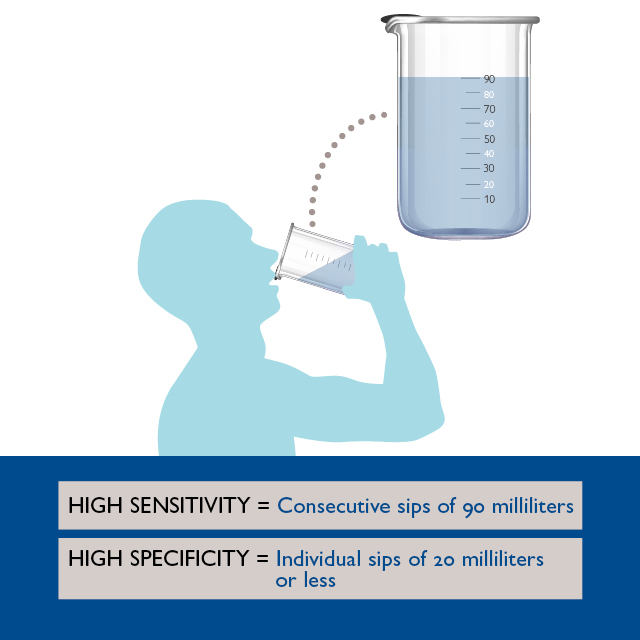For Martin Brodsky, a Johns Hopkins speech-language pathologist and associate professor of physical medicine and rehabilitation, the COVID-19 pandemic has transformed how he cares for patients with swallowing disorders — and, at the same time, left much of his work largely unchanged.
“Really, the biggest change is both wildly different and very familiar, and that’s the use of PPE,” he said. Personal protective equipment — including gloves, gowns, masks, face shields and a powered air-purifying respirator — has become the norm for dysphagia providers.
Because the nasal passages are a hub of SARS-CoV-2 infection, the assessment of dysphagia patients can be particularly challenging. Currently, there are no noninvasive diagnostic methods for swallowing disorders. During the initial months of the pandemic, Brodsky and his colleagues stopped using endoscopy and videofluoroscopy altogether, as these were believed to be aerosol-generating procedures, and therefore too risky.
But, together with a nationwide group of dysphagia experts, Brodsky developed a set of clinical algorithms early in the pandemic to help providers across various clinical settings provide the best possible care for patients with swallowing disorders while limiting the spread of the coronavirus. These algorithms, published in June 2020 in the journal Dysphagia, offer a road map to help clinicians determine when and in which patients — whether COVID-positive, -negative, or status unknown — to perform various diagnostic and treatment procedures, including endoscopy and videofluoroscopy.
For two months at the beginning of the pandemic, the use of videofluoroscopy was prioritized as a first-line tool, particularly in patients who tested positive for COVID or whose COVID status was unknown, according to the published algorithms. Now, recommendations have largely returned to the pre-pandemic standard of care, and endoscopy and videofluoroscopy are recommended equally as first-line diagnostic tools. In the Dysphagia article, the researchers share guidelines on how to evaluate patients with suspected swallowing disorders via telemedicine.
In addition, in a recent article published in the American Journal of Otolaryngology – Head and Neck Medicine and Surgery, Brodsky and his colleagues discuss the unique role of otolaryngologists in coordinating the care of COVID-19 survivors, who may — or may not — have swallowing disorders. Particularly in severe COVID cases, the clinicians write, otolaryngologists are “poised to lead efforts in early identification and intervention for impairments affecting patients’ quality of life.”
Indeed, as the world continues to wrestle with the pandemic, Brodsky believes it is critical to screen patients with COVID-19 for swallowing disorders, and urges his physician colleagues not to assume there isn’t a problem. “In a situation where the lungs are already compromised, if patients are having swallowing difficulties and aspirating, those will only further increase the risk of pneumonia and other severe complications.”
He adds, “COVID is here to stay, and we can’t let it paralyze us. We still need to move forward, be creative and work together across different sectors to make sure we are prepared and able to deliver the best care to patients — especially the most vulnerable.”


